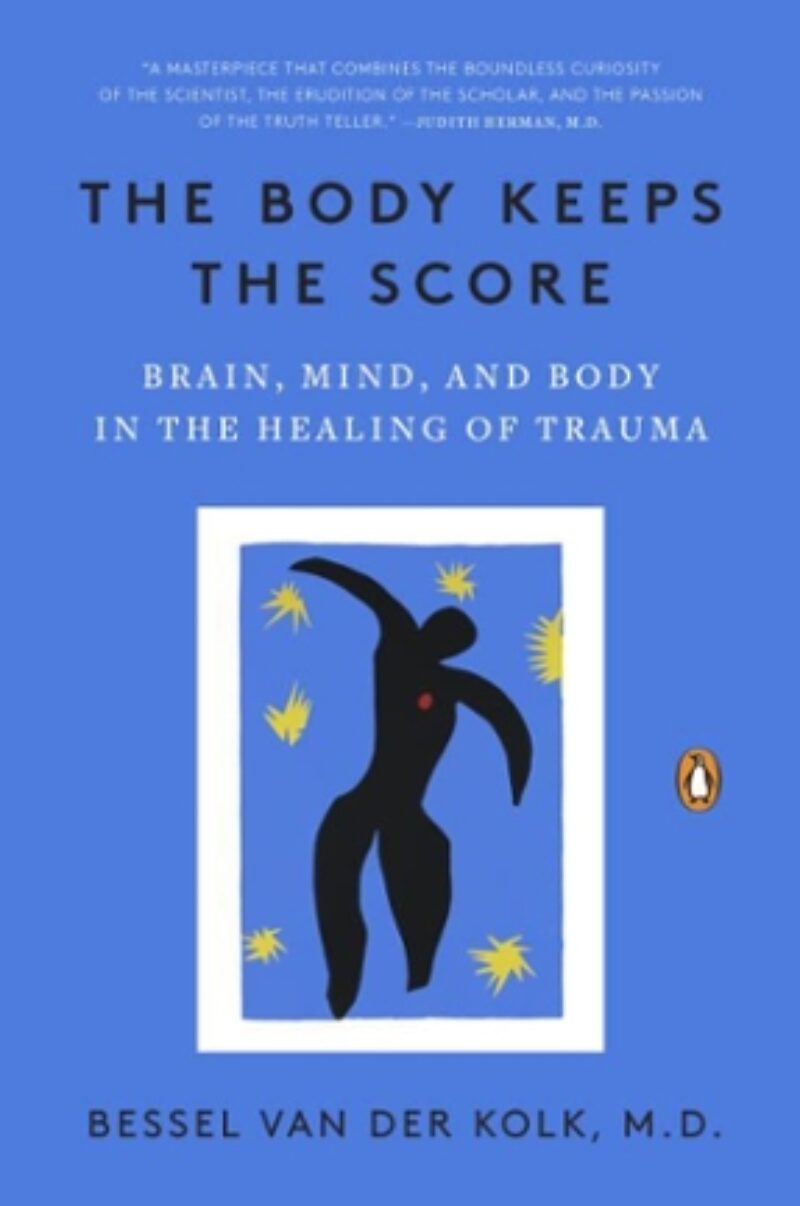Book Review: The Body Keeps the Score: Brain, Mind, and Body in the Healing of Trauma

It is a rare for a book about trauma and its recovery to become a sort of instant classic that speaks effectively to those with firsthand experience, professionals, and broader interested audiences. The Body Keeps the Score, written by Dr. Bessel van der Kolk and published in 2014, has done just that, even achieving the second spot on the New York Times Bestseller list for Science in 2019. While covering a broad range of traumatic experiences and offering tools relevant to them all, significant portions of the book discuss the experiences of those who endured childhood sexual abuse and ways they have accessed healing. For all of these reasons, No More Stolen Childhoods has The Body Keeps the Score in our resource lists for both care providers and survivors of abuse.
The wealth of information presented in The Body Keeps the Score defies simple summary, but as the title suggests, the starting premise is that traumatic experiences – ranging from combat, to childhood neglect, to sexual abuse of all forms, and beyond – all have lasting impacts on one’s mind, brain, and body. Accordingly, Dr. van der Kolk, later discusses three main avenues of healing: 1) that of “top-down” interaction, discussing and reconnecting with others in order to make conscious sense of one’s experience; 2) using medication to manage alarm reactions that result from trauma; and 3) the “bottom-up” approach of “allowing the body to have experiences that deeply and viscerally contradict the helplessness, rage, or collapse that result from trauma.” Many trauma survivors benefit from a combination of all three approaches, but one of the book’s aims is to call attention to the underutilization of the third approach.
However, before delving into different methods of recovery in the fifth and final section of the book, Dr. van der Kolk builds for readers a far-reaching and holistic understanding of trauma, the history of its study, its biological and neurological impact, its role in childhood development and attachment relationships, and its lasting imprint.
Throughout these sections, powerful anecdotes from decades of professional experience are interwoven with research findings and insights into the hurdles that arise in the scientific study of trauma. These anecdotes and the entire book can be an intense read, but such accounts are an important part of the holistic and ultimately empowering growing awareness of trauma. The reader gets windows into the depths of post-traumatic despair, but also the heights of human resilience. Encountering both aspects alongside each other becomes another opportunity for those without personal traumatic experience to glimpse the juxtaposition many survivors live with and manage in an ongoing way.
Section 5, Pathways to Recovery, touches on the role of language in achieving clarity, before delving into lesser utilized practices that have helped trauma survivors; such as dance, theater, yoga, Somatic Experiencing therapy, and the more well-known Eye Movement Desensitization Reprocessing (EMDR), all of which can be methods to reconfigure associations around bodily sensations and the perception of threat vs. safety. These are also approaches that rely less or not at all on the discussion of traumatic events. Nevertheless, there is no one approach that works for all people and one of the resounding themes of abuse recovery is the growth of autonomy, including in the sifting through options for healing.
Successfully explaining the history, impact, recovery, and context of traumatic experiences, The Body Keeps the Score spans from an introduction to an advanced lesson in the experiences under discussion. When one recognizes the prevalence of childhood sexual abuse and other traumas, it becomes a book about understanding people in our own lives and communities, which is part of making those communities stronger, generation by generation. It can be found online in paperback, ebook, and audiobook formats.